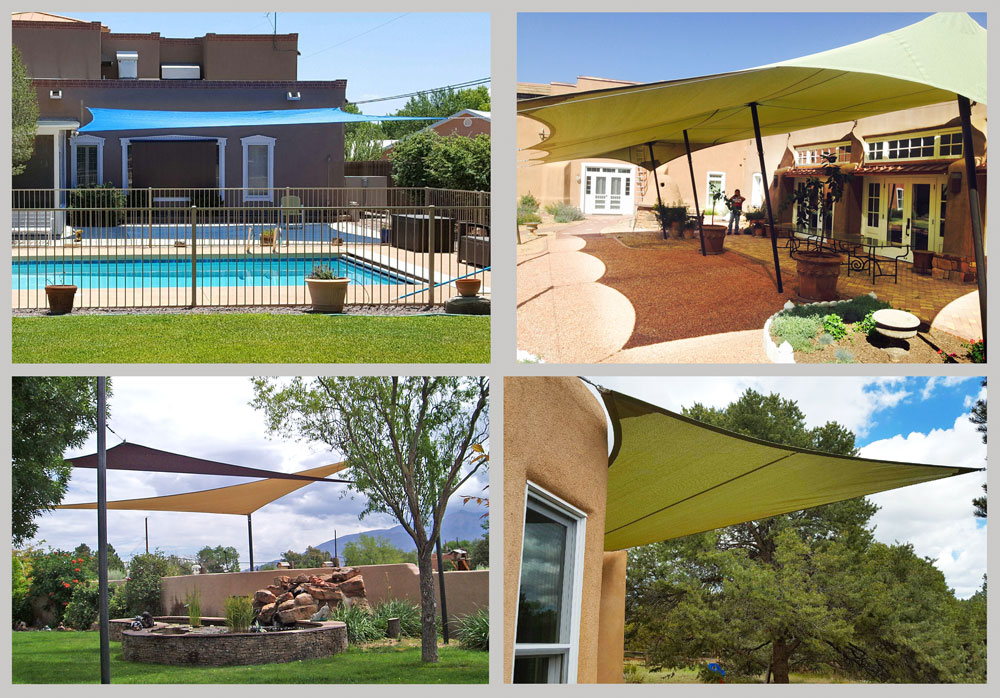The Art of Shade Sails
There is an art to covering spaces to shield areas from the sun. Awnings frame windows and doorways; patio covers, both fabric and aluminum, extend from the sides of the home over yards; screening pulls down from portals and windows. All of these installations are restricted by the their mounts and the relatively small areas they protect. But shade sails know no bounds and are limited only by the imaginations of those who design them.

Shade sails can be secured at one or more points to the side of a structure, or they can be completely free-standing. A designer can incorporate several smaller shade sails, have their positions overlap, mount them at different heights, introduce more than one color in a field of sails, and cut them in an endless variety of shapes for the greatest artistic affect and coverage. By cutting this fabric on the bias, a finished shade sail will pull and curve along it’s sides for a graceful arching. And while various triangles are pleasing, even rectangles or trapezoids and kite shapes result in dramatic coverage for large and small areas.
Fabricated of heavy gauge vinyl mesh, shade sails allow light, air and moisture to pass through, but are virtually impervious to fading, weather and insect damage. Edges should be heat sealed and sewn with double hem zig zag seams and reinforced ends for strength. Free-standing shade sails and outer mounts require massive posts sunk in concrete for a secure installation. Good shade sails made with Coolaroo fabric will have a 10 year warranty and the mounts should endure much longer. They are typically erected in the spring and taken down for storage in winter months as they are not designed to carry heavy snow loads.
